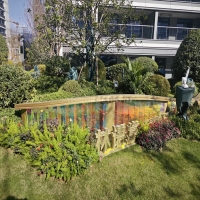Welcome to the website for landscape facilities products and knowledge.
How does the table’s aesthetic design align with modern or traditional landscape architecture trends?
The relationship between table design and landscape architecture represents a fascinating intersection of functionality and artistic expression. In contemporary landscape architecture, table aesthetics often embrace minimalist principles, clean lines, and sustainable materials that reflect our evolving connection with outdoor spaces. Modern designers frequently select tables with geometric precision, utilizing materials like powder-coated steel, reclaimed wood, or composite materials that withstand environmental elements while maintaining visual appeal.
Traditional landscape architecture, conversely, calls for tables that embody timeless elegance and historical continuity. These designs often incorporate classical proportions, ornate detailing, and natural materials such as weathered stone, aged teak, or wrought iron. The patina of these materials develops character over time, mirroring the organic growth and maturation of the surrounding garden.
The alignment between table aesthetics and landscape trends extends beyond mere visual harmony. Modern landscape architecture emphasizes seamless indoor-outdoor transitions, where tables serve as anchor points that blur boundaries between built and natural environments. Their designs frequently incorporate modular elements or adaptable configurations that respond to changing needs and spatial dynamics.
In traditional settings, tables function as focal points within carefully composed garden "rooms," often positioned to capture specific views or frame architectural features. Their designs reference historical precedents, whether through classical revival styles or rustic vernacular forms that echo regional building traditions.
Material selection remains crucial in both contexts. Modern tables might feature innovative composites with integrated lighting or planters, while traditional designs prioritize natural materials that develop character through weathering and use. The texture, color, and scale of tables must complement their surroundings—modern designs often create deliberate contrasts, while traditional approaches seek harmonious blending.
Sustainability represents another critical alignment point. Contemporary table designs frequently incorporate recycled materials and environmentally responsible manufacturing processes, reflecting landscape architecture's growing emphasis on ecological stewardship. Traditional designs, meanwhile, often utilize locally sourced materials and time-tested construction methods that embody principles of durability and resource efficiency.
Ultimately, successful table integration in landscape architecture depends on understanding contextual relationships. Designers must consider how table proportions relate to surrounding structures, how materials interact with planting schemes, and how surfaces accommodate both practical use and aesthetic contemplation. Whether through bold contemporary statements or subtle traditional complements, well-designed tables enhance our experience of landscape spaces, creating points of connection between human activity and the natural world.
Related search:

Recommendation
Metal and acrylic color-changing combined curtain wall for large-scale public landscape facilities